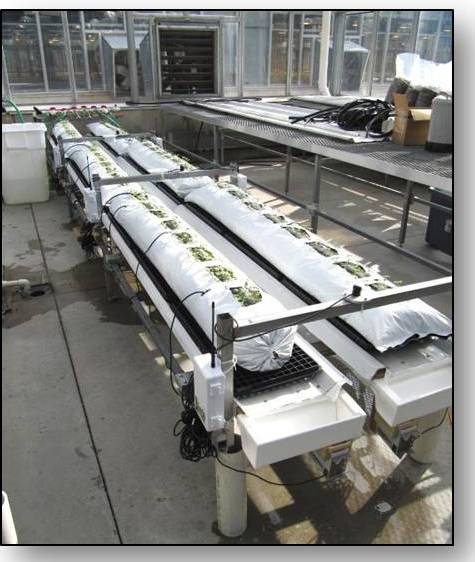You are here
Results
 A six-node, 30 sensor network was established to support the snapdragon water-use model research at the University of Maryland during Fall 2010.
A six-node, 30 sensor network was established to support the snapdragon water-use model research at the University of Maryland during Fall 2010.
The experimental setup (at left) consists of 6 replicated ‘troughs’ that each rests on 2 load cells that are connected (12 in total) to a Campbell CX10 datalogger. These load cells monitor total trough weight on a continuous basis. Each trough supports a 6 foot bag of perlite substrate, exactly as used in the Bauers commercial greenhouse (see description below).
Each bag is planted with 56 snapdragon plants situated either side of a drip tape that runs along the center of the bag. Each trough drains into a gutter, which in turn drains through an ECRN rain gauge which monitors runoff on a 5-min basis.
All troughs are monitored using EM50R radio nodes, each trough/bag sensed with 2x10-HS and 1 x EC-5 sensors to provide volumetric water content in the bag. An additional node is monitoring electrical conductivity (EC) with four of the new prototype GS3 sensors from Decagon. Another EM50R radio node monitors temperature, relative humidity and PAR at two positions in the row.
The entire system is fertigated with the same nutrient solution as used at the Bauers Greenhouse. Charles Bauer is providing us ongoing support to provide as near matching cultural conditions (temp, RH and fertigation management) to the commercial conditions at Bauers greenhouse.
